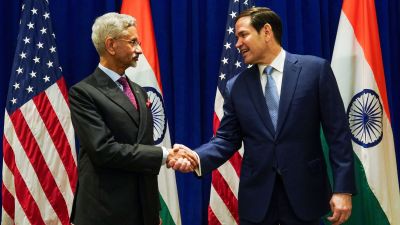Murdoch’s "skypaper" to be permanent
NEW DELHI, March 23: Having kick-started itself with Elections 98, the 24-hour Star News Channel is now going to be a permanent player in th...

NEW DELHI, March 23: Having kick-started itself with Elections 98, the 24-hour Star News Channel is now going to be a permanent player in the country’s political process. According to a contract signed between New Delhi Television (NDTV) and Star TV, the news channel has been extended beyond the six week period it had set for itself.
This comes at a time when the BJP has made a strong statement on standing by the 1956 Cabinet resolution on not allowing foreigners in the print media. The BJP and its allies have also put the 20 per cent cap on foreign equity in their national agenda. But now Rupert Murdoch’s newspaper in the sky will challenge the party’s public position on foreign ownership of news in the country. Clearly, not only does news give the Australian-American media baron mileage with politicians, it has also become a profitable venture.
According to advertising agency estimates, the six-week period alone netted the Star News Channel Rs 13 crore in advertising revenue (although some will bediverted to Star Movies and Star Plus which ran news bands). There were six associate sponsorships of $400,000 each and one presenting sponsor, BPL, which alone paid a goodly $700,000. NDTV was reportedly paid Rs 25 crore for the period.
The company also retains editorial control as well as veto power over additional programming from outside production houses. The company is reportedly paid Rs 8 lakh every day for four bulletins on Star Plus. The 9 pm bulletin for the channel earns about Rs 12 lakh in advertising (although this excludes agency commissions and discounts). It is believed that NDTV put its foot down on programming sourced from outside the organisation, although the Star TV CEO Rathikant Basu was toying with the idea of allowing some shows by a consortium of four producers.
Not so coincidentally, IMRB has also released data indicating that in homes with only cable and satellite connections, Star News and Star Plus were watched for 150 minutes compared to 123 minutes for the National Networkand DD Metro.
In addition, according to IMRB, Socio-Economic Category A viewers spent much more time watching Star Plus and Star News (an index of 190) than Doordarshan (a comparative index of 89), which is important in terms of attracting upmarket advertising.
But in homes with access to the terrestrial network, the National Network and DD Metro were watched for 257 minutes as against 150 minutes for Star Plus and Star News. While the National Network did 58 hours of coverage, DD Metro did 31 hours during the elections. Both Star Plus and Star News ran the same election special simultaneously for 60 hours non-stop.
According to the Doordarshan Audience Research ratings, Prasar Bharati CEO Surindar Singh Gill may have been well-advised to try out the Doordarshan news crew, in whom he had little confidence, for the election coverage. On the last day of counting (March 4), the much-derided Doordarshan Samachar had higher ratings (31.2) than TV Today’s Aap ka Faisla (28.7). On March 3 again,Samachar had a rating of 30.4 which was marginally more than Aap ka Faisla (30). It was only on March 2 that the Samachar scored less than Aap ka Faisla (29 and 30.5 respectively).
Photos


- 01
- 02
- 03
- 04
- 05





























